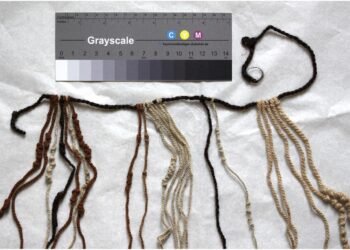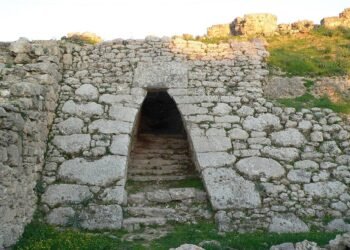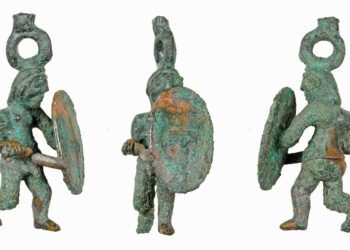Archaeologists at Mount Vernon, the historic estate of President George Washington, have unearthed a remarkable cache of 35 glass bottles dating back to the 18th century. These bottles, discovered in the mansion’s cellar, contain perfectly preserved cherries and other berries.

The discovery is part of the ongoing Mansion Revitalization Project, a $40 million effort aimed at preserving the original structure of the Mount Vernon estate, which is managed by the Mount Vernon Ladies’ Association (MVLA). This non-profit historic preservation organization, established in 1858, has been dedicated to maintaining the estate’s integrity and educating the public about its historical significance.
Mount Vernon President Doug Bradburn expressed his astonishment at the find. “Never in our wildest dreams did we imagine this spectacular archaeological discovery,” he said. “These artifacts likely haven’t seen the light of day since before the American Revolution, perhaps forgotten when George Washington departed Mount Vernon to take command of the Continental Army.”
The bottles were discovered in five storage pits within the mansion’s cellar, and of the 35 bottles found, 29 remain intact. These intact bottles contain cherries and a mix of other berries, possibly gooseberries or currants, preserved in a manner that has allowed them to survive for over two centuries. The discovery follows an earlier find in April of two European-manufactured bottles also containing preserved cherries.

Jason Boroughs, Mount Vernon’s principal archaeologist said: “These extraordinary discoveries continue to astonish us. These perfectly preserved fruits picked and prepared more than 250 years ago provide an incredibly rare opportunity to contribute to our knowledge of the 18th-century environment, plantation foodways, and the origins of American cuisine.”
The contents of the bottles have been carefully extracted and are currently being stored in a large refrigerator at the Mount Vernon archaeology lab. The fruits and their remnants are set to undergo extensive scientific analysis by the United States Department of Agriculture’s Agricultural Research Service (ARS). This analysis will include DNA extraction and possibly germination of the seeds to identify the specific varieties of cherries and other berries, as well as an examination of their chemical properties, such as sugar content and acidity.

The bottles and their contents also shed light on the lives and contributions of the enslaved people who worked at Mount Vernon. According to Mount Vernon officials, the meticulous preservation of the fruits was likely overseen by an enslaved cook named Doll, who was brought to the estate by Martha Washington in 1759. Doll and other enslaved workers were responsible for planting the fruit trees, harvesting the produce, and preparing it for preservation.
“These artifacts are a testament to the knowledge and skill of the enslaved people who managed the food preparations from tree to table,” Boroughs noted. “When you put hands on these things, we know that the last person that put hands on them did so in bondage.”
The fruits were preserved in tightly-sealed bottles, which were then buried in dense clay, creating an almost airtight environment that has allowed them to remain intact for so long. The bottles themselves are fragile and require careful handling to ensure they are not damaged further.
























Very nice,I love it